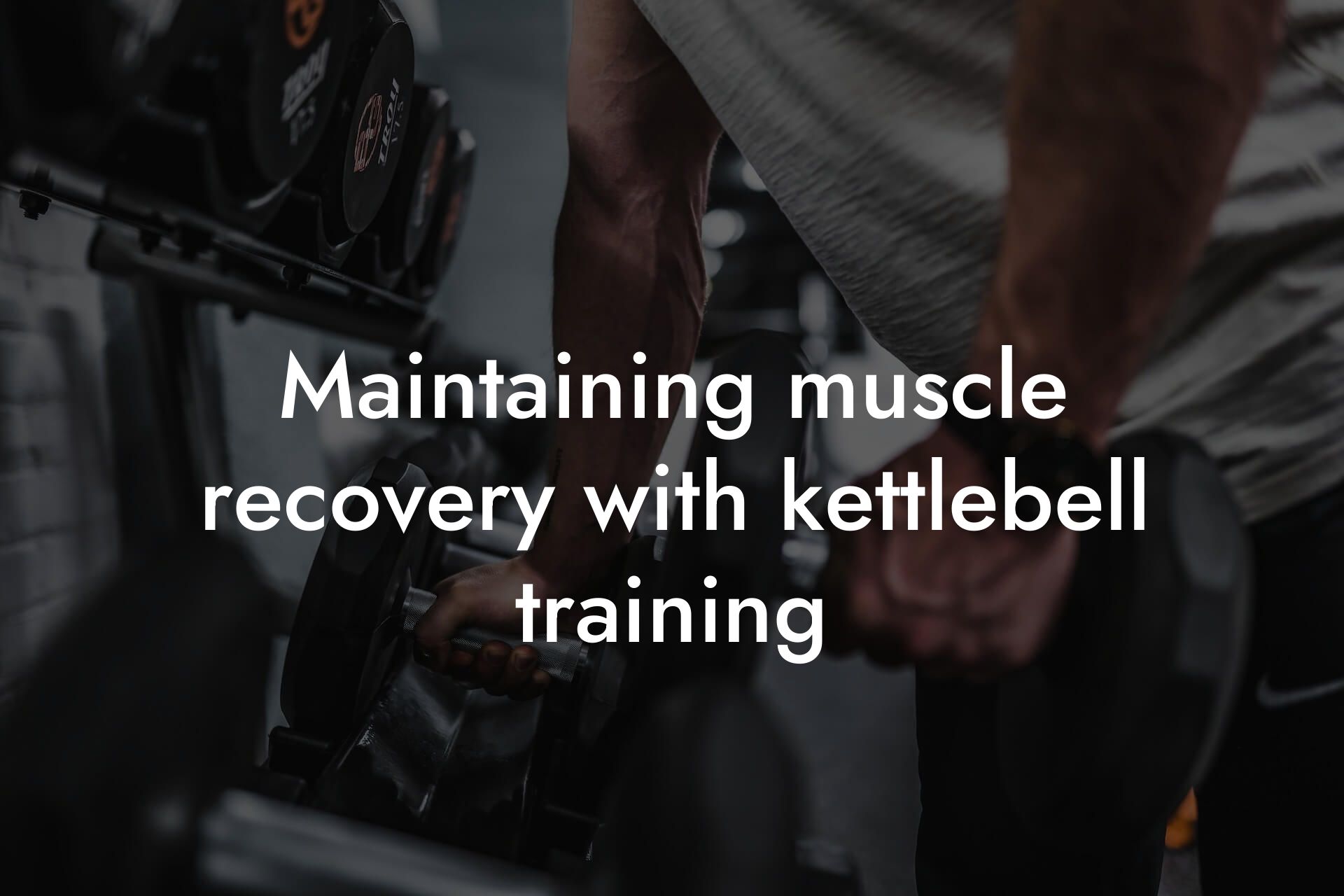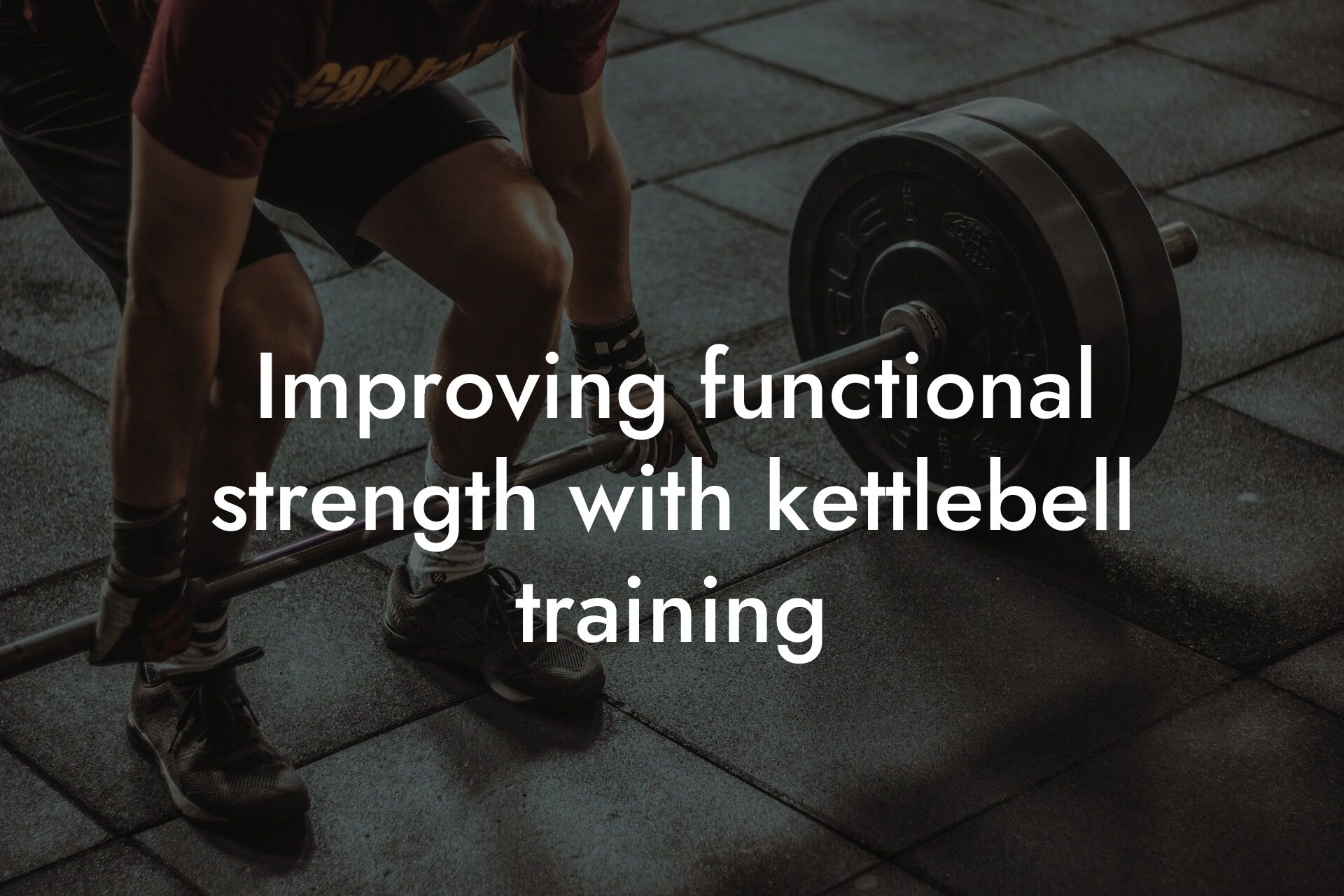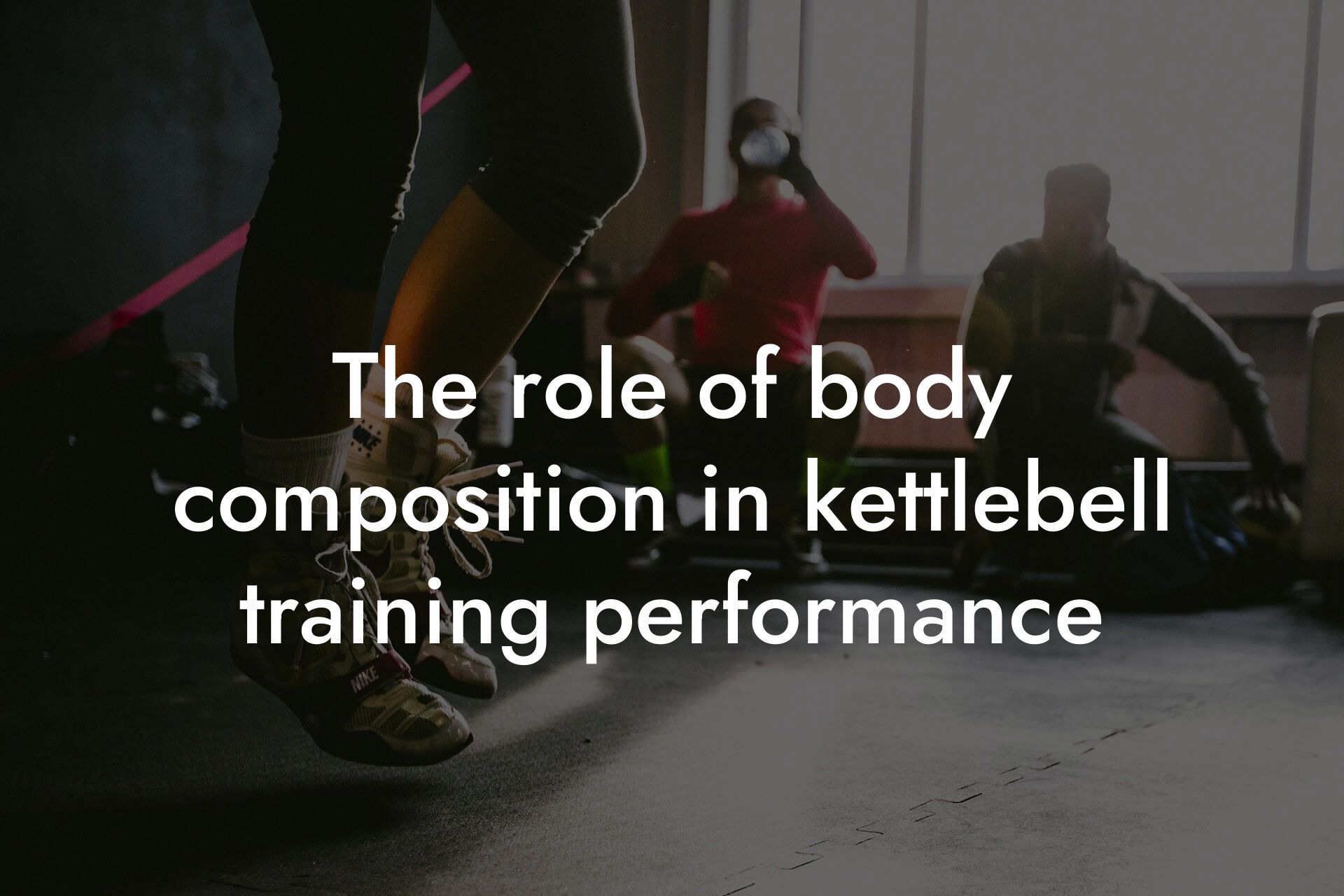As a high-earning professional, you understand the importance of maintaining a healthy and fit physique. Not only does it boost your confidence, but it also improves your overall well-being and energy levels. One effective way to achieve your fitness goals is through kettlebell workouts. However, to get the most out of your kettlebell exercises, it's essential to focus on reducing body fat. In this article, we'll explore the importance of reducing body fat, how it affects your kettlebell workout results, and provide you with a comprehensive guide on how to achieve your goals.
Table of Contents
- Why Reducing Body Fat Matters for Kettlebell Workouts
- The Ideal Body Fat Percentage for Kettlebell Workouts
- How to Reduce Body Fat for Better Kettlebell Workout Results
- The Role of Macronutrients in Reducing Body Fat
- Hydration and Sleep: The Forgotten Factors in Reducing Body Fat
- Tracking Your Progress: The Importance of Body Composition Analysis
- Get Started with Tano Performance Group
- Frequently Asked Questions
Why Reducing Body Fat Matters for Kettlebell Workouts
Excess body fat can hinder your progress and make it challenging to achieve the results you want from your kettlebell workouts. Here are some reasons why reducing body fat is crucial:
• Increased mobility and flexibility: Excess body fat can limit your range of motion, making it difficult to perform exercises with proper form. By reducing body fat, you'll improve your mobility and flexibility, allowing you to move more efficiently and effectively.
• Improved strength and power: Carrying excess body fat can make you feel sluggish and weak. By reducing body fat, you'll increase your strength and power, enabling you to lift heavier weights and perform more intense exercises.
• Enhanced endurance: Reducing body fat improves your cardiovascular endurance, allowing you to perform longer and more intense workouts.
The Ideal Body Fat Percentage for Kettlebell Workouts
The ideal body fat percentage for kettlebell workouts varies depending on your goals and fitness level. Generally, a body fat percentage of 10-15% for men and 15-20% for women is considered optimal for kettlebell exercises. However, if you're a beginner, it's essential to focus on reducing your body fat percentage gradually to avoid injury or burnout.
How to Reduce Body Fat for Better Kettlebell Workout Results
Reducing body fat requires a combination of proper nutrition, consistent training, and patience. Here are some tips to help you achieve your goals:
• Create a calorie deficit: To reduce body fat, you need to create a calorie deficit by consuming fewer calories than your body burns. Aim for a daily calorie deficit of 500-1000 calories to promote weight loss.
• Eat protein-rich foods: Protein takes more energy to digest, which helps increase your metabolism and burn fat. Aim for 1.6-2.2 grams of protein per kilogram of body weight from sources like lean meats, fish, eggs, and dairy products.
• Incorporate HIIT workouts: High-Intensity Interval Training (HIIT) workouts are effective for burning fat and improving cardiovascular endurance. Incorporate HIIT workouts into your kettlebell routine 2-3 times a week.
• Focus on compound exercises: Compound exercises like squats, deadlifts, and cleans work multiple muscle groups at once, helping you burn more calories and build lean muscle mass.
The Role of Macronutrients in Reducing Body Fat
Macronutrients play a crucial role in reducing body fat. Here's how to balance your macronutrients for optimal fat loss:
• Carbohydrates: Focus on complex carbohydrates like whole grains, fruits, and vegetables, which provide energy for your workouts. Aim for 2-3 grams of carbohydrates per kilogram of body weight.
• Protein: As mentioned earlier, protein is essential for building and repairing muscle tissue. Aim for 1.6-2.2 grams of protein per kilogram of body weight.
• Fat: Healthy fats like avocado, nuts, and seeds provide energy and support hormone production. Aim for 0.5-1 gram of fat per kilogram of body weight.
Hydration and Sleep: The Forgotten Factors in Reducing Body Fat
Hydration and sleep are often overlooked but play a crucial role in reducing body fat:
• Hydration: Drinking plenty of water helps flush out toxins, improve digestion, and boost metabolism. Aim for at least 8-10 glasses of water per day.
• Sleep: Adequate sleep is essential for muscle recovery, hormone regulation, and fat loss. Aim for 7-9 hours of sleep per night.
Tracking Your Progress: The Importance of Body Composition Analysis
Tracking your progress is crucial to reducing body fat and achieving your fitness goals. At Tano Performance Group, we use DEXA machine technology to provide a comprehensive body composition analysis. This analysis helps you:
• Identify areas of excess body fat
• Track changes in lean muscle mass
• Monitor bone density
• Develop a personalized fitness plan tailored to your needs
Reducing body fat is essential for achieving optimal results from your kettlebell workouts. By focusing on proper nutrition, consistent training, and patience, you can reduce your body fat percentage and improve your overall fitness. Remember to track your progress with regular body composition analysis and make adjustments to your fitness plan as needed. With dedication and persistence, you can achieve the physique and fitness level you desire.
Get Started with Tano Performance Group
At Tano Performance Group, we're committed to helping high-earning professionals like you achieve their fitness goals. Our team of experts will guide you through a comprehensive body composition analysis using our state-of-the-art DEXA machine technology. With our personalized fitness plans and ongoing support, you'll be on your way to reducing body fat and achieving the results you want from your kettlebell workouts. Contact us today to schedule your appointment and take the first step towards a leaner, stronger you.
Frequently Asked Questions
What is the ideal body fat percentage for kettlebell workouts?
For men, an ideal body fat percentage for kettlebell workouts is between 10-15%, while for women, it's between 15-20%. Having a lower body fat percentage can improve your overall performance and reduce the risk of injury.
Why is reducing body fat important for kettlebell workouts?
Reducing body fat is essential for kettlebell workouts because it allows for better mobility, flexibility, and range of motion. Excess body fat can put additional stress on your joints, leading to injuries and decreased performance.
How does body fat affect my kettlebell swing?
Excess body fat, particularly around the midsection, can affect your kettlebell swing by reducing your power, speed, and overall efficiency. It can also put additional strain on your lower back, increasing the risk of injury.
What are the benefits of reducing body fat for kettlebell workouts?
The benefits of reducing body fat for kettlebell workouts include improved performance, increased strength, better mobility, and reduced risk of injury. Additionally, reducing body fat can also boost your confidence and overall physical appearance.
How can I measure my body fat percentage?
There are several ways to measure body fat percentage, including skinfold measurements, bioelectrical impedance analysis (BIA), and dual-energy X-ray absorptiometry (DXA). You can also use a body fat caliper to measure your skinfold thickness.
What is the best way to reduce body fat for kettlebell workouts?
The best way to reduce body fat for kettlebell workouts is through a combination of proper nutrition, consistent training, and sufficient rest. Focus on eating a balanced diet, increasing your protein intake, and incorporating high-intensity interval training (HIIT) into your workout routine.
How long does it take to see results from reducing body fat?
The time it takes to see results from reducing body fat can vary depending on individual factors, such as starting body fat percentage, diet, and training. However, with consistent effort, you can start to see noticeable results within 6-12 weeks.
What are some common mistakes people make when trying to reduce body fat?
Common mistakes people make when trying to reduce body fat include crash dieting, overtraining, and neglecting proper nutrition. It's essential to focus on sustainable lifestyle changes rather than quick fixes or fad diets.
How can I maintain my muscle mass while reducing body fat?
To maintain muscle mass while reducing body fat, focus on eating a high-protein diet, incorporating strength training exercises, and getting sufficient rest. Aim to lose 0.5-1 kg of body fat per week for a sustainable weight loss.
What role does nutrition play in reducing body fat for kettlebell workouts?
Nutrition plays a critical role in reducing body fat for kettlebell workouts. Focus on eating a balanced diet that includes plenty of protein, healthy fats, and complex carbohydrates. Aim to create a calorie deficit of 500-1000 calories per day to promote weight loss.
How can I incorporate kettlebell workouts into my weight loss routine?
Incorporate kettlebell workouts into your weight loss routine by starting with 2-3 times per week and gradually increasing the frequency and intensity. Focus on exercises that work multiple muscle groups at once, such as the kettlebell swing and clean and press.
What are some effective kettlebell exercises for weight loss?
Effective kettlebell exercises for weight loss include the kettlebell swing, clean and press, goblet squat, and single-arm row. These exercises work multiple muscle groups at once, increasing your caloric expenditure and promoting weight loss.
How can I track my progress and stay motivated?
Track your progress by taking progress photos, measurements, and tracking your workouts. Stay motivated by setting realistic goals, finding a workout buddy, and rewarding yourself for milestones achieved.
What are some common myths about reducing body fat?
Common myths about reducing body fat include the idea that low-fat diets are effective, that cardio is the only way to lose weight, and that spot reduction is possible. It's essential to focus on sustainable lifestyle changes rather than quick fixes or fad diets.
How can I reduce body fat around my midsection?
To reduce body fat around your midsection, focus on exercises that target your core, such as planks, Russian twists, and leg raises. Additionally, incorporate high-intensity interval training (HIIT) and strength training exercises to burn belly fat.
What are the benefits of having a low body fat percentage?
The benefits of having a low body fat percentage include improved overall health, increased confidence, and better physical performance. Additionally, having a low body fat percentage can also reduce your risk of chronic diseases, such as diabetes and heart disease.
How can I maintain my weight loss results over time?
To maintain your weight loss results over time, focus on making sustainable lifestyle changes, such as eating a balanced diet and incorporating regular exercise into your routine. Avoid fad diets and quick fixes, and instead focus on long-term progress.
What role does stress play in reducing body fat?
Stress can play a significant role in reducing body fat by increasing cortisol levels, which can promote belly fat storage. Focus on managing stress through techniques such as meditation, yoga, and deep breathing exercises.
How can I get started with reducing body fat for kettlebell workouts?
To get started with reducing body fat for kettlebell workouts, start by setting realistic goals, creating a workout routine, and focusing on proper nutrition. Consult with a healthcare professional or certified trainer to create a personalized plan tailored to your needs.
What are some common challenges people face when trying to reduce body fat?
Common challenges people face when trying to reduce body fat include lack of motivation, inconsistent training, and poor nutrition. It's essential to stay committed to your goals, seek support from others, and focus on sustainable lifestyle changes.
How can I stay accountable and motivated during my weight loss journey?
Stay accountable and motivated during your weight loss journey by setting realistic goals, tracking your progress, and finding a workout buddy or accountability partner. Celebrate your successes and don't be too hard on yourself when you encounter setbacks.
Here are some related articles you might love...
- Maintaining muscle recovery with kettlebell training
- Improving functional strength with kettlebell training
- The role of body composition in kettlebell training performance
- The importance of bone density in kettlebell fitness
- Nutrition strategies for kettlebell enthusiasts
- Strength training tips specific to kettlebell exercises
- Balancing strength, speed, and flexibility in kettlebell workouts
- How DEXA scans can benefit kettlebell training athletes
Zak Faulkner
Zak Faulkner is a leading authority in the realm of physical health and body composition analysis, with over 15 years of experience helping professionals optimise their fitness and well-being. As one the experts behind Tano Performance Group, Zak has dedicated his career to providing in-depth, science-backed insights that empower clients to elevate their physical performance and overall health.
With extensive knowledge of DEXA technology, Zak specializes in delivering comprehensive body assessments that offer precise data on body fat, muscle mass, bone density, and overall physique. His expertise enables individuals to make informed decisions and achieve their fitness goals with accuracy and confidence. Zak’s approach is rooted in a deep understanding of human physiology, combined with a passion for helping clients unlock their full potential through personalised strategies.
Over the years, Zak has earned a reputation for his commitment to excellence, precision, and client-focused service. His guidance is trusted by top professionals who demand the best when it comes to their health. Whether advising on fitness programs, nutritional strategies, or long-term wellness plans, Zak Faulkner’s insights are a valuable resource for anyone serious about taking their health and fitness to the next level.
At Tano Performance Group, Zak continues to lead our Content Team revolutionising how professionals approach their physical health, offering unparalleled expertise that drives real results.




